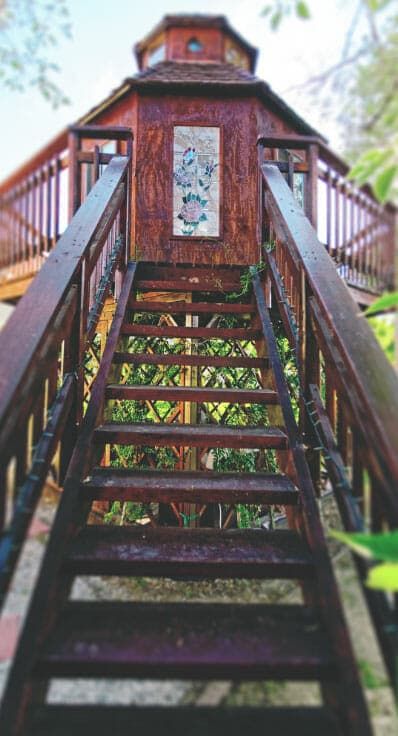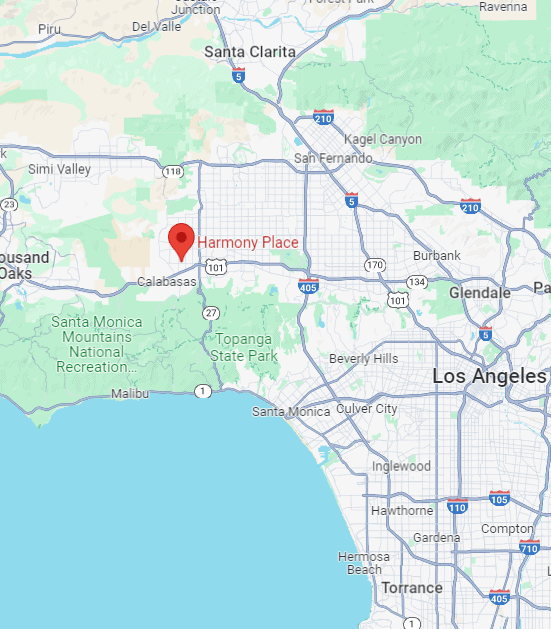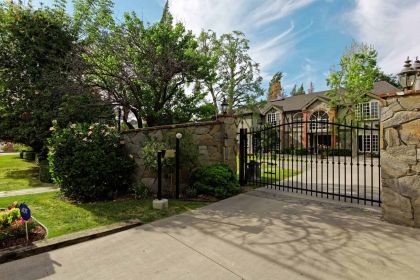How Much Does a Heroin Rehab Program Cost Without Health Insurance in Los Angeles?
Harmony Place has several substance abuse addiction recovery facilities that specialize in heroin addiction rehabilitation. Our heroin dependency treatment programs will help you every step of the way, from detoxification to aftercare, to attain sobriety. Contact us today to speak to one of our admissions counselors to learn more about our heroin rehab.
How much does heroin rehab cost in Los Angeles? On this page, you will learn the cost of a heroin addiction program and the available financial assistance, including payment plans and a sliding scale fee structure. At Harmony Place, we accept most insurance plans for our heroin rehabilitation programs. Let us help you understand your coverage, explore rehab costs, and review available pricing options.
What Is Heroin Addiction, Abuse, and Heroin Use Disorder?
Heroin Use Disorder (HUD), or heroin addiction, is a long-term condition characterized by both psychological and physical dependence. You may find it difficult to stop and often require larger quantities due to tolerance. Excessive heroin use can result in an assortment of health problems, which may include cognitive impairment, lung complications, and diseases affecting the liver or kidneys.
Heroin addiction can manifest through a variety of physical and psychological symptoms. These may include compulsive behavior, intense cravings, and the use of illicit drugs. You might develop an increased tolerance and engage in drug-seeking actions. Physical signs can be more obvious, such as track marks from usage, nodding off, or collapsed veins. Heroin addiction can also lead to blackouts, mood swings, anxiety, and an overwhelming obsession with the substance. In severe cases, an overdose is a possible risk.
To address heroin abuse and dependency, rehabilitation programs like Harmony Place offer essential support to achieve sobriety. Contact our admission counselors to discover our economical therapy.
What Is a Heroin Rehab Program?
A heroin rehab program is a structured treatment strategy aimed at helping you overcome heroin addiction. These programs offer medical, psychological, and social support to assist in ceasing heroin use, managing withdrawal symptoms, preventing relapse, and rebuilding your life. Here’s a breakdown of what a typical heroin rehab program may entail:
- Assessment and Intake
- This evaluates your physical health, mental health, substance use history, and social circumstances.
- Development of a personalized heroin addiction treatment plan.
- Detoxification (Detox)
- Medical detox is often the initial step, where heroin is safely eliminated from the body.
- Medications like methadone, buprenorphine, or clonidine may be utilized to ease your withdrawal symptoms.
- This process can occur in inpatient or outpatient settings, depending on the severity of your heroin addiction.
- Inpatient or Residential Treatment
- A live-in facility providing 24/7 care and support.
- Intensive therapy (individual, group, family), education about addiction, and relapse prevention strategies.
- Heroin rehab programs can range from 30 days to several months.
- Outpatient Treatment
- Suitable if you do not require or cannot commit to inpatient care.
- You reside at home while attending scheduled therapy sessions and medical appointments.
- Offers flexibility but demands strong commitment and support.
- Medication-Assisted Treatment (MAT)
- Incorporates medications like methadone, buprenorphine, or naltrexone to alleviate cravings and heroin withdrawal symptoms.
- Often combined with behavioral therapies for enhanced effectiveness.
- Behavioral Therapy
- Evidence-based methods such as Cognitive Behavioral Therapy (CBT), Contingency Management, and Motivational Interviewing aim to alter thought patterns and behaviors.
- Group therapy and 12-step programs like Narcotics Anonymous (NA) are also frequently included.
- Aftercare and Relapse Prevention
- Continuous support to sustain sobriety, including heroin addiction support groups, sober living environments, and ongoing therapy.
- Development of relapse prevention plans to address triggers and high-risk scenarios.
- Support for Co-Occurring Disorders
- Treatment for mental health conditions such as PTSD, depression, or anxiety that may accompany heroin addiction.
Heroin Addiction Treatment Stats in LA County
Heroin addiction remains a significant public health challenge in Los Angeles County, although recent data indicates some evolving trends in opioid consumption. According to the California Health Care Foundation’s 2022 report, heroin-related emergency department visits decreased between 2019 and 2020, while non-heroin-related visits surged by nearly 60 percent.
This change may signify shifting patterns in drug use, particularly the increasing prevalence of synthetic opioids like fentanyl. Despite the reduction in heroin-related emergencies, Los Angeles County reported an average of 464 accidental opioid-related deaths annually from 2011 to 2017, highlighting the ongoing risks associated with opioid misuse in the area.
How Much Does Heroin Addiction Cost?
The economic toll of heroin addiction can reach hundreds of billions of dollars each year. Utilizing a methodology adapted from the Centers for Disease Control and Prevention (CDC), the Joint Economic Committee (JEC) estimated that the opioid epidemic, including heroin use, cost the United States approximately $1.04 trillion in 2018, $985 billion in 2019, and nearly $1.5 trillion in 2020.
These alarming figures encompass both direct and indirect expenses, such as healthcare, criminal justice, lost productivity, and the economic ramifications of premature deaths.
On an individual level, heroin addiction can be financially crippling. You might spend between $150 and $200 daily to sustain your habits, totaling over $50,000 annually. This figure does not include additional costs associated with legal troubles, job loss, medical issues, and rehabilitation expenses.
When factoring in the broader societal impact, such as the increased strain on public health systems and law enforcement, the actual cost of heroin addiction stretches far beyond you individually; it impacts families, communities, and the national economy. The continuous rise in fatal opioid overdoses, particularly in 2021 and beyond, suggests that the financial burden of addiction is likely to keep growing.
How Much Do Heroin Addiction Interventions Cost?
Understanding the costs associated with heroin addiction interventions is crucial for planning and decision-making. The expenses vary depending on the type of intervention, the professionals involved, and any additional services provided. Hiring a certified interventionist to lead the process is a common approach when considering professional intervention services. The cost for such services can range from $1,500 to over $10,000.
Factors influencing this cost include the interventionist’s experience and certification, geographic location, travel expenses, and whether follow-up care or case management is included. Alternatively, many heroin addiction treatment centers offer intervention programs as part of their packages. These can sometimes be included in the overall treatment cost or billed separately, ranging from $2,000 to $5,000. Some rehabilitation facilities might apply this cost toward the total treatment fee.
If you’re considering a DIY or family-led intervention, the direct costs are minimal, though there are potential risks if not executed properly. Associated costs may include books or resources priced between $20 and $100 and therapy or coaching for preparation, which costs $100 to $300 per session. Additional costs may include travel and lodging expenses, family therapy sessions, and post-intervention services such as case management.
It’s essential to note that intervention services are rarely covered by insurance; however, heroin addiction treatment following an intervention may be covered, so it’s advisable to check with your provider or treatment centers like Harmony Place for specific coverage details.
How Much Does It Cost to Get Sober from Heroin Addiction?
Understanding the costs associated with getting sober from heroin addiction is crucial before you begin addiction recovery. The average cost of behavioral health programs for heroin abuse can vary widely based on the treatment approach, duration, location, and insurance involvement. Heroin detoxification is often the first step in the process, focusing on managing heroin withdrawal symptoms.
Inpatient detox costs can range from $250 to $1,000 per day, typically lasting five to seven days, resulting in a total cost of $1,250 to $7,000. Alternatively, outpatient detox costs between $1,000 and $1,500 in total, though it may not be suitable for everyone due to its less intensive nature.
Following a medical detox, you might explore residential heroin rehab, which provides 24/7 support and structured care. A 30-day program typically costs between $10,000 and $30,000, while longer programs, ranging from 60 to 90 days, can cost $12,000 to $60,000 or more. Luxury rehab facilities can significantly increase expenses, charging $30,000 to over $100,000 for a 30-day stay.
If you’re opting for outpatient heroin rehab, which allows you to live at home but attend regular sessions, costs can vary. Basic outpatient heroin treatment programs, with one to two sessions per week, range from $1,000 to $5,000 per month, while Intensive Outpatient Programs (IOPs) can cost between $3,000 and $10,000 monthly.

We Will Check Your Heroin Rehab Treatment Coverage
Heroin Addiction Out-of-Pocket Costs for Rehab Programs in Los Angeles
Navigating the heroin addiction program treatment cost in Los Angeles can be challenging, particularly if you are without insurance. It is essential to understand the various rehabilitation options and the associated costs if you’re seeking recovery from heroin dependency. Below is an overview of typical heroin rehab programs in Los Angeles, along with their average out-of-pocket expenses.
Cost of Heroin Medical Detox
Medical detox is often the initial step in heroin addiction treatment, providing supervised care to manage withdrawal symptoms safely. In Los Angeles, the cost of detoxification varies significantly. Standard medical detox usually ranges from $1,000 to $5,000, depending on the facility and duration of stay. On the other hand, rapid detox procedures can range from $6,500 to $22,000.
Cost of Heroin Residential Rehab
Residential heroin rehabilitation programs provide round-the-clock care within a structured setting, usually lasting for 30 days. In Los Angeles, the typical cost of a 30-day residential heroin addiction treatment program ranges from $10,000 to $30,000, depending on the amenities and services offered by the facility.
Cost of Heroin Dual-Diagnosis Programs
Dual-diagnosis programs cater to your needs if you’re dealing with heroin addiction and co-occurring mental health disorders simultaneously. In Los Angeles, these programs’ costs often range from $15,000 to $40,000 for a 30-day treatment period, highlighting the extensive care offered.
Cost of Heroin PHP
Partial Hospitalization Programs (PHPs) for heroin addiction provide intensive treatment while enabling you to return home each evening. In Los Angeles, the expense for a 30-day heroin addiction PHP varies between $6,000 and $12,000, depending on the facility and the services offered.
Cost of Heroin IOP
Intensive Outpatient Programs (IOPs) for heroin addiction offer structured therapy sessions multiple times each week. In Los Angeles, the cost of a 30-day heroin addiction IOP typically ranges from $3,000 to $8,000, depending on the specifics of the program and its duration.
Cost of Heroin MAT Programs
Medication-Assisted Treatment (MAT) for heroin addiction integrates medications with counseling and behavioral therapies. In Los Angeles, the cost of MAT for heroin rehab programs typically ranges from $5,000 to $15,000 for a 30-day program, varying based on the medications prescribed and any additional services offered.

How to Find Affordable Heroin Rehab Centers in Los Angeles
Locating cost-efficient heroin rehab centers in Los Angeles requires a detailed approach, beginning with the investigation of local nonprofit groups and publicly funded initiatives. Start by looking into the Los Angeles County Department of Public Health’s Substance Abuse Prevention and Control (SAPC) division, which offers a list of certified facilities that provide treatment at reasonable costs or even for free.
Medicaid, known as Medi-Cal in California, is widely accepted at numerous heroin rehab centers and can significantly reduce treatment costs. Another practical method is contacting local community health clinics or mental health centers. These centers often have established relationships with substance abuse treatment providers like Harmony Place and can offer valuable referrals to programs with affordable rates. Additionally, utilizing online directories such as SAMHSA’s Treatment Locator can assist in finding nearby accredited facilities that suit specific financial and care needs.
When evaluating the affordability of heroin addiction rehabilitation centers, it’s essential to verify the facilities’ licensing, examine success rates, and understand the services they offer, such as detoxification, therapy, and follow-up care. Ensuring these elements align with your financial situation and recovery objectives is crucial for achieving successful heroin recovery outcomes. Contact us at Harmony Place to learn more about our competitive pricing for heroin addiction rehabilitation.

Heroin Addiction Rehab in Los Angeles That Offers Flexible Payment Plans
Harmony Place offers heroin addiction rehab in Los Angeles with competitive fees and flexible payment plans. If you or someone you care about is struggling with heroin addiction, our rehabilitation center delivers comprehensive heroin inpatient addiction treatment. Additionally, our facilities accept insurance, increasing accessibility.
Inpatient Heroin Rehab Centers in Woodland Hills
Inpatient heroin rehab programs create a structured setting with around-the-clock support, enabling you to concentrate fully on your addiction recovery without the distractions of everyday life. Our facilities in Woodland Hills provide tailored heroin treatment plans and accept most major insurance providers, helping to alleviate the financial strain. Call (855) 652-9048 today to connect with one of our specialists.
Harmony Place
23041 Hatteras St.
Woodland Hills, CA 91367
Harmony Place East
22913 Burbank Blvd.
Woodland Hills, CA 91367
What Types of Heroin Addiction Rehab Programs Are Available in Los Angeles?
Heroin Treatment Program
Heroin recovery programs are designed to assist you in defeating both physical and psychological dependence. These programs typically encompass detoxification, behavioral therapy, Medication-Assisted Treatment (such as methadone or buprenorphine), and counseling. Numerous facilities offer both residential and non-residential options. Residential rehabilitation offers a more structured setting, while non-residential rehabilitation provides greater flexibility if you juggle obligations.
The expense of heroin treatment programs in Los Angeles varies considerably depending on the level of care and amenities available. Non-residential programs may range from $1,000 to $5,000 for 30 days, whereas residential programs can range from $10,000 to $30,000 for the same duration. Luxury rehab centers with upscale amenities may charge significantly more. Fortunately, many heroin treatment centers accept insurance, which can help alleviate the financial burden.
Los Angeles Dual-Diagnosis and Heroin Rehab Program
A dual-diagnosis rehab program is ideal if you are not only struggling with heroin addiction but also experiencing co-occurring mental health disorders such as depression, anxiety, or PTSD. Dual diagnosis programs seamlessly combine heroin addiction treatment with psychiatric care, ensuring that both issues are addressed at the same time. Treatment may include medication management, therapy, and support group sessions.
In Los Angeles, the cost of a dual-diagnosis rehab program is usually higher than that of standard heroin addiction treatment, due to the specialized care provided. Typically, these programs can range from $15,000 to $40,000 for a 30-day stay, while outpatient dual-diagnosis treatment begins at approximately $2,000. Many insurance plans may cover these programs, especially if the facility is accredited and the treatment is regarded as medically necessary.

How Much Does Heroin Rehab Cost Without Health Insurance in Los Angeles?
The price of heroin rehabilitation in Los Angeles varies depending on the type and level of care required. Medical detox typically ranges from $1,000 to $5,000. Inpatient residential treatment, which offers around-the-clock care, can cost between $20,000 and $30,000 for a 30-day program. Outpatient programs tend to be more budget-friendly, with costs ranging from $1,000 to $10,000.
These costs can change based on facility amenities, the number of therapy sessions, and the specific services in your treatment plan. If you’re without insurance, many heroin rehab centers in Los Angeles, such as Harmony Place, provide financial assistance to make heroin addiction treatment more attainable. Options may include:
- Sliding-scale fees based on income
- Flexible payment plans
- Scholarships from nonprofit organizations
Additionally, some state-funded programs and community organizations offer low-cost or free heroin treatment services. Contact us at Harmony Place to inquire about available financial assistance options.
How Much Does Heroin Rehab Cost With Insurance Coverage in Los Angeles?
The cost of heroin rehabilitation services in Los Angeles can vary depending on several factors, including the treatment center, the level of care required, and your insurance plan. Most insurance companies, including private providers and those operating under the Affordable Care Act, often cover a portion or all expenses related to detoxification, inpatient rehabilitation, outpatient programs, and ongoing therapy.
When insurance is involved, out-of-pocket costs can range from several hundred to a few thousand dollars. Fortunately, many rehab facilities like Harmony Place offer competitive pricing and financial assistance to help make heroin treatment more accessible. It’s essential to have a clear understanding of your insurance benefits and available heroin treatment options. Our qualified admissions team can verify your insurance, outline which services are covered, and assist you in developing a tailored treatment plan that meets your needs. Don’t hesitate to contact us at Harmony Place to begin your heroin addiction recovery.
What Influences the Cost of Heroin Addiction Treatment in Los Angeles, CA?
Investing in heroin addiction treatment is crucial for long-term recovery and well-being; however, the expenses in Los Angeles can differ significantly based on various factors. Understanding the reasons behind these costs is essential for making informed decisions. Several factors can impact the overall cost of care, whether you’re seeking outpatient support or inpatient care.
Here are some essential elements that affect the price of heroin addiction treatment in Los Angeles:
- Severity and Type of Addiction
The complexity of your heroin addiction significantly influences treatment costs. For instance, if you’re battling a long-term, high-dependence heroin addiction, you may need more intensive and prolonged care, including medically supervised detox and ongoing therapy.
- Program Duration
Heroin treatment programs can range from 30 days to over a year. Typically, longer programs provide more comprehensive care and relapse prevention but also incur higher expenses. Extended stays are often recommended for severe cases to lay a stronger foundation for recovery.
- Intensity of Treatment
Outpatient programs are often more affordable than inpatient or residential treatment, where you reside at the facility full-time. However, Intensive Outpatient Programs (IOPs) that require frequent participation can still incur significant costs. Inpatient rehab, while pricier, offers around-the-clock care and support, which is often crucial for overcoming heroin addiction.
- Medical Services and Staff Expertise
The availability of on-site medical care—including detoxification services, psychiatric care, and Medication-Assisted Treatment (MAT)—contributes to overall costs. Facilities with licensed medical professionals, addiction specialists, and highly qualified therapists may charge more for their expertise.
- Facility Amenities and Accommodations
Luxury rehab centers in Los Angeles often provide upscale amenities, including private rooms, gourmet meals, fitness centers, and holistic therapies such as yoga or acupuncture. These enhancements can significantly elevate the price compared to standard heroin treatment centers that focus solely on essential clinical services.
- Location
Even within Los Angeles, the specific neighborhood can affect costs. Heroin treatment centers in affluent areas such as Malibu or Beverly Hills frequently charge more due to premium real estate, privacy, and high-end amenities.
- Insurance Coverage
Insurance can significantly impact out-of-pocket expenses. Many private insurance plans cover at least part of heroin addiction treatment, particularly if the facility is in-network. However, coverage varies widely, and those without insurance may need to explore sliding scale fees or state-funded options, which tend to be more budget-friendly.
How to Pay for the Cost of Heroin Rehab Programs in Los Angeles County
Paying for a heroin rehab program in Los Angeles County can be overwhelming; however, numerous resources and financial assistance programs are available to help you access the treatment you need. Whether you have insurance, a limited income, or no financial resources at all, various options exist to support your heroin addiction recovery:
Health Insurance
Most private insurance plans, including those under the Affordable Care Act, cover heroin treatment. Additionally, Medi-Cal, California’s Medicaid program, offers extensive coverage for heroin addiction services such as detox, residential rehab, outpatient care, and Medication-Assisted Treatment (MAT). Verify your coverage details and understand any applicable co-pays or deductibles.
Out-of-Pocket Payment
If you don’t have insurance, paying out of pocket remains an option. Costs can significantly vary depending on the facility and level of care. At Harmony Place, we offer a 30-day residential heroin treatment program that can cost anywhere from $10,000 to $30,000. Many facilities also offer flexible payment plans to make treatment more affordable and accessible.
Sliding Scale Fees
Some heroin addiction treatment centers adjust their fees according to your ability to pay. The Los Angeles County Department of Health Services offers the “Ability to Pay Program” (ATP), which provides free or reduced-cost services if you’re earning up to 200 percent of the Federal Poverty Level, with a sliding scale if you’re earning above that threshold.
Payment Plans
Numerous heroin rehabilitation facilities offer payment plans that enable you to spread the cost of treatment over time. This approach can make rehab more affordable by alleviating the immediate financial burden. Discussing payment options directly with the facility’s billing department is wise.
Employee Assistance Programs (EAPs)
If you are employed, your workplace may offer an Employee Assistance Program (EAP) to support your well-being. EAPs provide confidential counseling and referral services, including support for substance use issues. These programs can be an invaluable first step in seeking treatment and may cover initial assessments and short-term counseling.
Government Assistance Programs
Los Angeles County has various publicly funded programs if you’re combating Substance Use Disorders(SUDs) like heroin addiction. The Substance Abuse Prevention and Control (SAPC) division can connect you to a network of heroin treatment providers. For assistance finding suitable services, call the Substance Abuse Service Helpline (SASH) at 1-844-804-7500.
Family Support
Family members often play an essential role in supporting your heroin addiction recovery. They may provide financial assistance or help navigate treatment options. Open communication about the costs and benefits of treatment can lead to collaborative solutions.
Scholarships or Grants
Specific nonprofit organizations and treatment centers offer scholarships or grants to those who cannot afford rehabilitation. These financial aids are typically based on need and may cover partial or complete treatment expenses. It’s important to inquire directly with facilities about the availability of such programs.
- Cost of Drug Rehab in Los Angeles
- How Much Does Alcohol Rehab Cost?
- Cocaine Rehab Cost California
- Cost of Benzo Addiction Treatment
- Adderall Rehab Cost Los Angeles
- Cost of Fentanyl Rehab Without Insurance
- Cost of Meth Rehab Los Angeles
- How Much Does Opioid Treatment Cost?
- How to Pay for Rehab In Los Angeles
- Cost of Addiction Therapy
- Cost of Addiction Treatment
- Cost of Drug and Alcohol Aftercare
- Cost of Drug and Alcohol Detox
- Cost of Drug and Alcohol Intensive Outpatient
- Cost of Drug and Alcohol Outpatient
- Cost of Drug and Alcohol Partial Hospitalization
- Cost of Drug and Alcohol Residential Inpatient
- Cost of Dual Diagnosis Treatment
- Cost of Sober Living
- Cost of Treatment
Heroin Use Disorder (HUD) and Addiction Statistics and Info in Southern California
- According to the California Health Care Foundation’s substance use report in 2022, between 2019 and 2020, the number of heroin-related emergency department visits in California decreased while the number of non-heroin-related opioid ED visits increased by nearly 60%.
- The Desert Sun shared an analysis of county data of death reports that showed in Riverside County, a large stretch of Southern California that includes Palm Desert and Palm Springs, overdose heroin deaths have risen over the past decade.
- The National Institute on Drug Abuse provided a California Opioid Summary that showed that in 2017, there were 2,199 overdose deaths involving opioids in California—a rate of 5.3 deaths per 100,000 persons, which is lower than the national rate of 14.6 deaths per 100,000 persons. Heroin deaths increased in the same period, from 593 in 2012 to 715 deaths in 2017.
- The California Department of Public Health shared that from 2020 to 2021, heroin overdose death rates decreased by 23.6%, and prescription opioid-related overdose death rates had a slight increase of 1.1%, staying relatively stable.
- The National Drug Intelligence Center shared a California Southern District Drug Threat Assessment from 2000, which stated that the San Diego Police Department classifies the heroin threat as moderate but increasing and reports a growing number of younger users.
- The County of Los Angeles Public Health shared that in LA County, there were an average of 464 accidental opioid-related deaths per year from 2011 to 2017.












